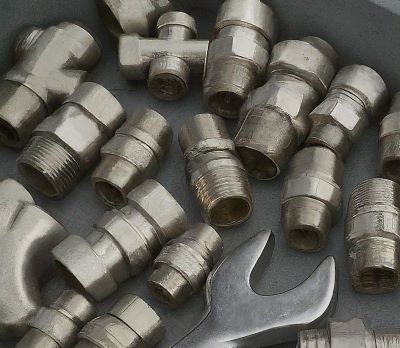Hydraulic systems are the lifeblood of numerous machines and equipment across various industries. From construction and agriculture to manufacturing and transportation, these systems rely on the smooth transfer of pressurized fluids to generate power and movement. But within these systems, a seemingly small component plays a critical role: the hydraulic fitting.
These fittings ensure proper connection between hoses, pipes, and other hydraulic components. Misidentifying a hydraulic fitting can have serious consequences, leading to leaks, malfunctions, and even accidents.
So, how can you ensure you’re using the right fitting for the job? Here are some top tips for hydraulic fitting identification:
Understanding Hydraulic Fitting Types
There are several main categories of hydraulic fittings, each suited for different applications:
➡️ Threaded fittings: These fittings rely on male and female threads to create a secure connection. Common types include NPT (National Pipe Thread) and BSP (British Standard Pipe), which differ in thread angle and form.
➡️ Crimp fittings: These fittings are permanently attached to hoses using a specialized crimping tool. They offer a strong, leak-proof connection ideal for high-pressure applications.
➡️ Flange fittings: Featuring a flanged design with bolt holes, these fittings are suitable for high-pressure and high-flow applications where easy connection and disconnection are needed.
Beyond these categories, there are numerous specific fitting types designed for various purposes. Some common examples include:
➡️ JIC (Joint Industrial Council): These fittings have a 37-degree flared design for a secure metal-to-metal seal, commonly used in medium and high-pressure applications.
➡️ ORFS (O-ring Face Seal): Featuring a straight thread and an O-ring for sealing, ORFS fittings offer high leak resistance and are popular in mobile hydraulic systems.
Top Tips for Hydraulic Fitting Identification
Now that you have a basic understanding of fitting types, let’s delve into the identification process:
Tip #1
Visual Inspection: Take a close look at the fitting’s shape, thread pattern, and sealing surface. For instance, JIC fittings have a distinctive 37-degree flare, while ORFS fittings have a straight thread profile.
Tip #2
Measurement is Key: Accurate measurements are crucial for proper identification. Use calipers to measure the thread diameter and a thread gauge to determine the thread pitch (distance between threads). Matching these measurements to known specifications of different fitting types will help you narrow it down.
Tip #3
Consult the Manufacturer’s Information: Look for markings or part numbers stamped on the fitting itself. These markings can provide a wealth of information, including the fitting type, size, and pressure rating. Manufacturer catalogs or websites often offer detailed specifications based on these markings.
Tip #4
Consider the Application: The hydraulic system’s purpose can offer clues about the likely fitting type. High-pressure systems often utilize crimp fittings for their superior strength, while flange fittings might be present for easy disconnect needs.
Tip #5
Seek Professional Help (Optional): If you’re still unsure about the fitting type after following these tips, consider consulting a hydraulics specialist. This can be particularly helpful for complex systems or less common fitting types.
Conclusion
Proper hydraulic fitting identification is essential for ensuring the safety, performance, and reliability of your hydraulic systems. By following these top tips and understanding the different fitting types, you’ll be well-equipped to choose the right fitting for the job.
Remember, a secure and leak-free connection starts with proper identification!
Post time: Jun-25-2024


